Overclockable Pentium Anniversary Edition Review: The Intel Pentium G3258
by Ian Cutress on July 14, 2014 10:00 AM EST- Posted in
- CPUs
- Intel
- Pentium
- Overclocking
- Pentium-AE
- G3258
Gaming and Synthetics on Processor Graphics
The Haswell Pentium and Celeron ranges are filled with GT1 solutions, referred to as simply 'HD (Haswell)'. The same is true for Sandy Bridge and Ivy Bridge, although with Haswell the i3 CPU range upgraded to HD 4400 or HD 4600 - a significant leap in performance. As the graphics power is low for full 3D titles, and as such we test on lower frequencies, we might see the CPU power matter more here than with our Devil's Canyon review.
F1 2013
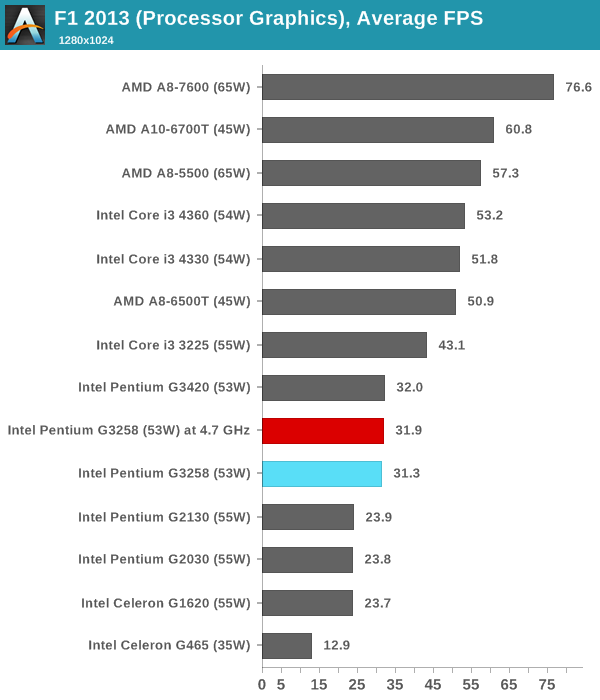

Bioshock Infinite
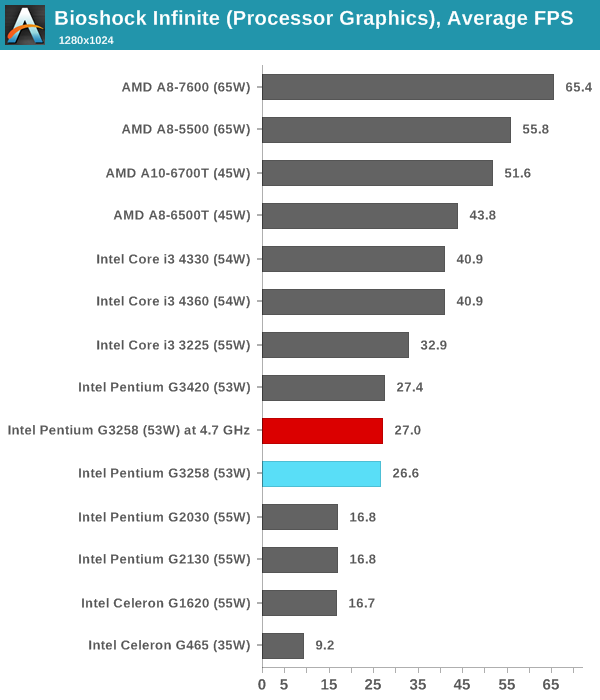

Tomb Raider
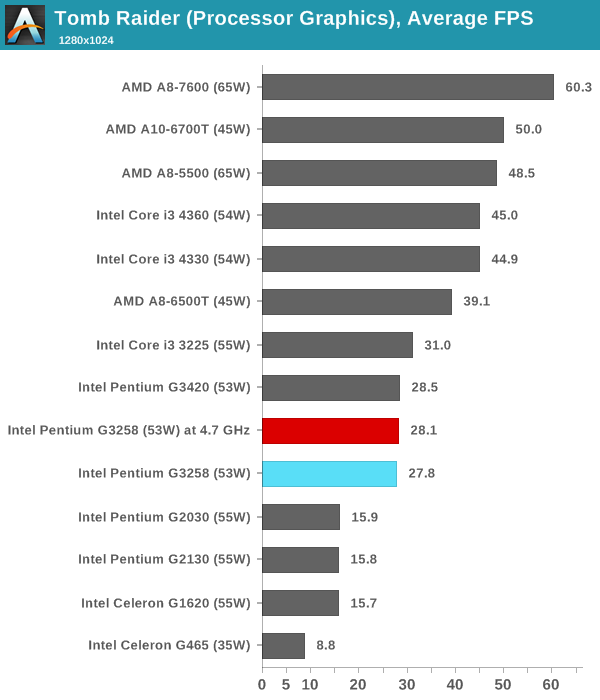
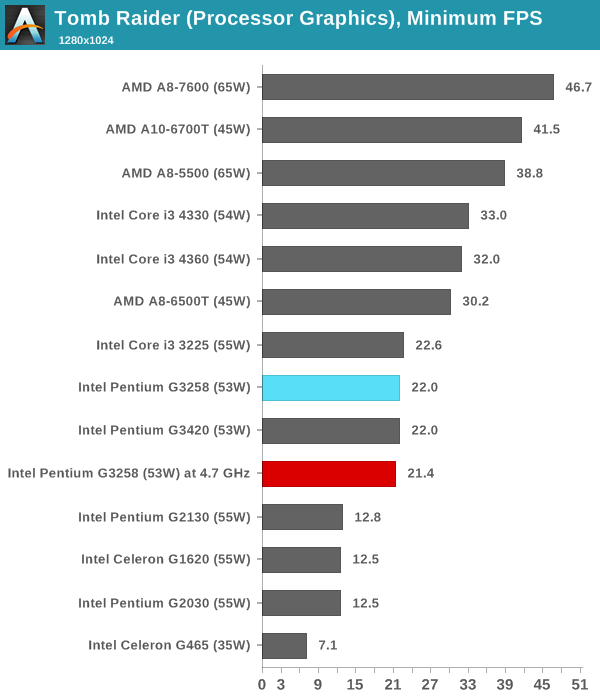
Sleeping Dogs
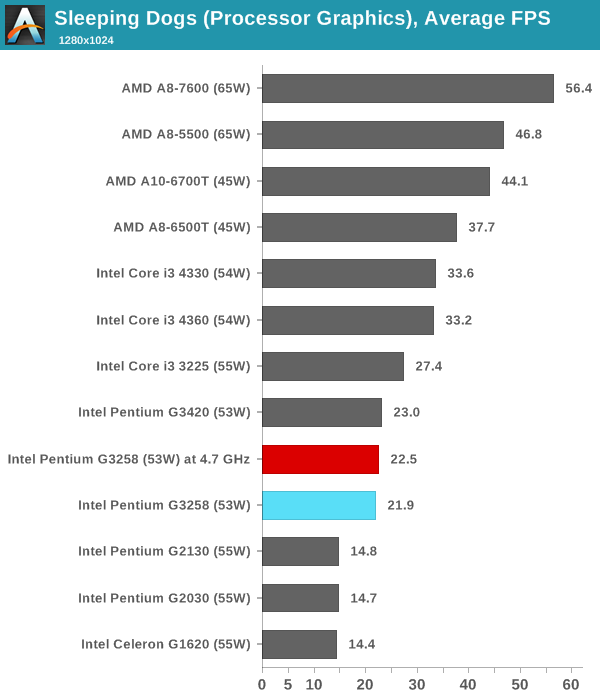
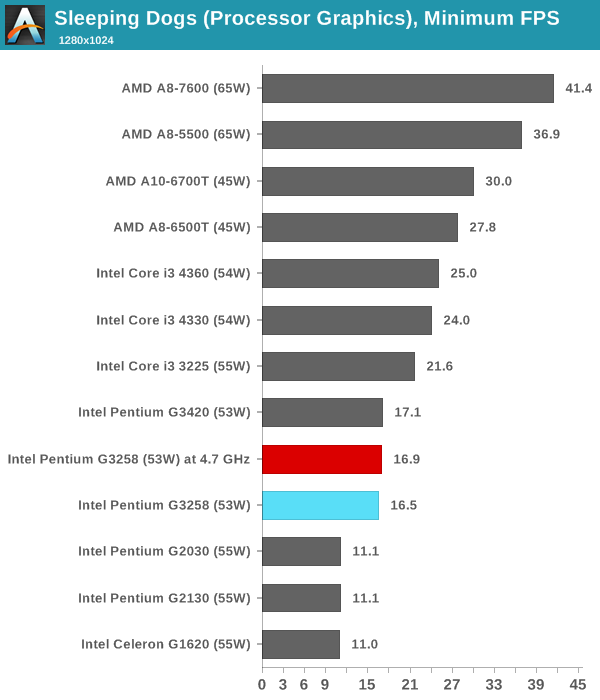
Company of Heroes 2
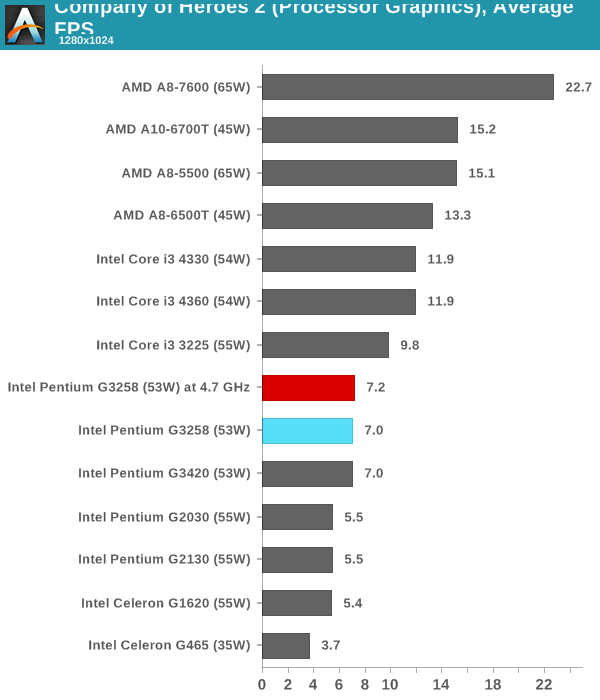
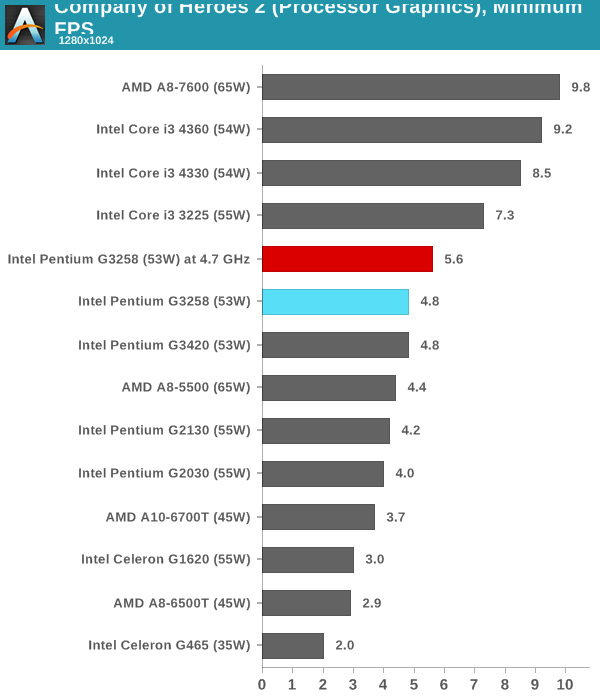
CompuBench 1.5
CompuBench is a new addition to our CPU benchmark suite, and as such we have only tested it on the following processors. The software uses OpenCL commands to process parallel information for a range of tests, and we use the flow management and particle simulation benchmarks here.
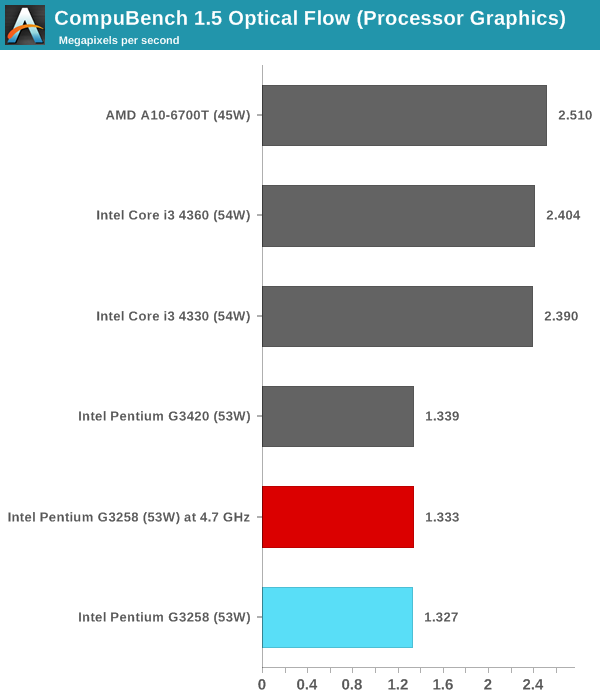
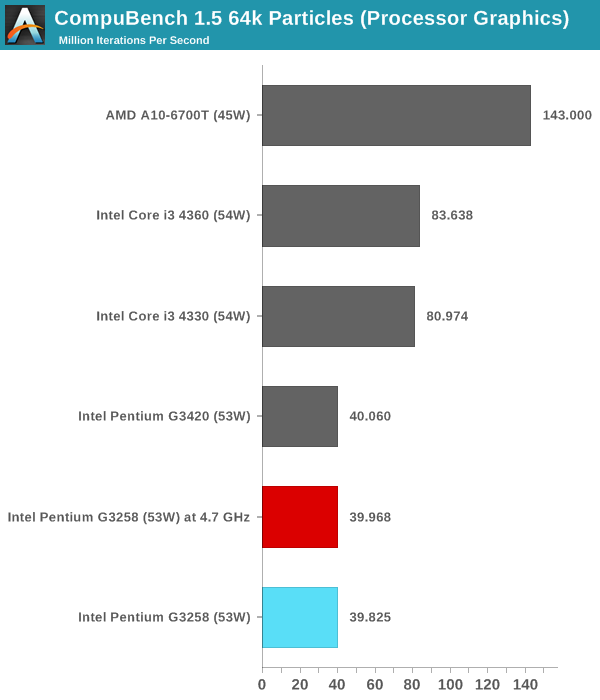
3DMark Fire Strike
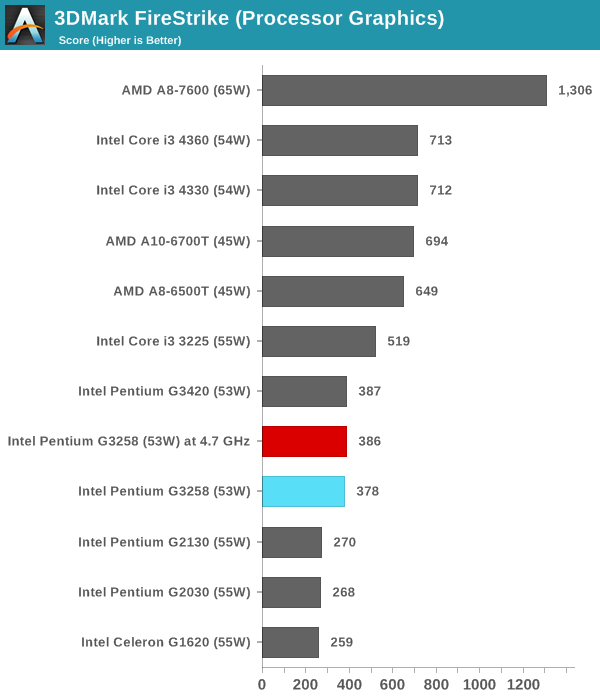
The increase in speed due to overclocking only has one effect on gaming using the internal graphics - a slight advantage to minimum frame rates. Unfortunately the IGP is crippled too much to see any gain in performance for average frame rates and AMD APUs at similar power outputs have up to a 2x advantage.










96 Comments
View All Comments
smunter6 - Monday, July 14, 2014 - link
And don't forget about Micro Center which has been offering the G3258 for $60 since it came out.HanzNFranzen - Tuesday, July 15, 2014 - link
The i3 4130 is on Newegg at the moment for $112.00 (3.4ghz instead of 3.5ghz of the 4330)Computer Bottleneck - Tuesday, July 15, 2014 - link
The i3-4130 is not just 100 Mhz slower than i3-4330. It is also missing 1MB of cache. (See my comments elsewhere after this article on why that might be important. I posted an Anandtech forum link with some test results to back up my concerns)HangFire - Monday, July 14, 2014 - link
The E2160 was Core 2 architecture, but it wasn't a "Core 2 Duo E2160". It was Pentium-branded with no Level 3 cache and a very small Level 2 cache.I had the E2180 and overclocked the snot out of it for over a year until I ponied up the bucks for a quad core. It could play any game of the time on "High" competently except for some micro-stutters. I attribute that to the lack of a big CPU L2/L3 cache, not to mention the old-style FSB memory interface.
Rankor - Monday, July 14, 2014 - link
"...taking a low cost part, such as the Celeron 300A, and adjusting one or two settings to make it run as fast as a Pentium III 450 MHz."Celery 300A's were based off the Mendocino Pentium II, not the Pentium III Coppermines.
drexnx - Monday, July 14, 2014 - link
the 450mhz p!!! the 300A competed against weren't coppermines though, they were Katmai cores ;)drexnx - Monday, July 14, 2014 - link
and that half-speed off-die L2 cache was a big detriment to the Katmai as well, since the 300A was full speed on-dieHruodgar - Monday, July 14, 2014 - link
Also I could get mine to 504 MHZ :)extide - Tuesday, July 15, 2014 - link
Original 300A had only 128K though, where as the Coppermines had 256K. Some of the later Celerons had no L2, though.Concillian - Monday, July 14, 2014 - link
stock speed i3 beats a massively OC'ed dual core. The multi core scaling era really is here. i3 is cheaper if you consider the whole system (non-OC mobo easily offsets the CPU cost, no need for a massive cooler on a stock clock, etc..) and performs better in almost every scenario...This leads me to one conclusion. Intel is banking on people making a dumb decision and buying this just because it's OCable.
As the article says, an i3-K CPU would be ideal. However, Intel is too smart to release one. They know it will eat into the margins that it's enjoyed by positioning it's offerings so people feel compelled to buy an i5-K or i7-K .